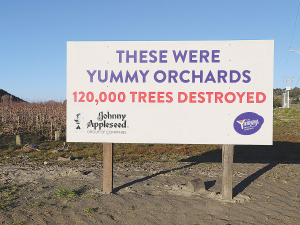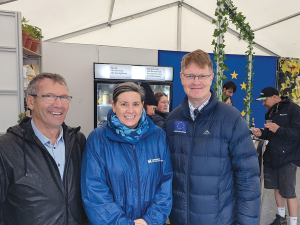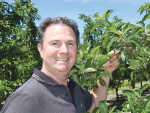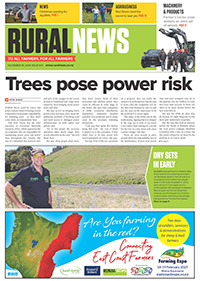Attendees at a recent Beef+Lamb NZ winter workshop in South Canterbury heard from two leading farmers deploying different strategies in managing high lambing percentages.
Matt and Lynley Wyeth, Wairarapa, explained how they’re housing triplet-bearing ewes to boost lamb survival and raising every orphan lamb they can.
Meanwhile local B+LNZ demonstration farmers Warren and Andrea Leslie’s aim is to have every ewe producing twins, but no more.
“To me anything is possible and we should never say ‘never’,” commented consultant and facilitator of the Leslies’ demonstration farm project, Nicky Hyslop, at the workshop.
To that end they now only use rams that were twins out of ewes that were also twins, and have split their 3000 headwaters ewes into an ‘A flock’ of repeatedly twinning ewes, and a ‘B flock’ of single and triplet bearers that go to terminal sires.
“It’s actually about chasing the dollars in numbers of lambs weaned per ewe mated. If we’re fortunate enough to hit that ‘BHAG’ (big hairy audacious goal) of 200% that would be $144 per ewe, compared to a 10-year average of $111/ewe… over 3200 ewes that’s $105,000,” noted Hyslop.
With the demonstration farm project only 18 months old it’s a case of ‘watch this space’ for results, but in the Wairarapa the Wyeth’s already have runs on the board, and dollars in the bank, from their initiative to capitalise on triplets.
“Our target is to raise triplet survival from 180% (as % of scanning) to 270% out of a possible 300%,” Matt told the workshop.
Last spring they put 400 ewes through customised pens in the covered yards of their woolshed, bringing them in as three batches: early, mid and late lambers, as identified by scanning.
Prior to housing ewes were in “lock-down” for a week in the paddock to condition them to their indoor feed of nuts and lucerne hay. “It also makes the shed a lot cleaner.”
Hurdles divide the woolshed pens so 20-30 ewes share an area until they start lambing. Once a ewe drops its lambs, it’s moved to an individual pen for about six hours to ensure all lambs get a feed of colostrum, then they’re moved to a “mixing pen” with five or six other mums for a few hours to reinforce the maternal bond, then they’re out to the paddocks. “We’ll probably increase that time in the mixing pen this year.”
Another tweak will be using a trailer to take the mums and lambs out to the most sheltered paddocks around the farm, rather than just those closest to the shed.
“This year we plan to do 1200 ewes in two sheds.”
Last spring triplet-bearing housed two-tooths had a lambing percentage at docking of 262%, or 287% when 56 orphan lambs were added in. Including quads and quintuplets total lamb mortality was 9.4%.
Meanwhile triplet-bearing mixed age ewes docked 268% or 283% with 17 orphans and 13% mortality.
A control mob of outdoor triplet-bearing ewes docked 220%. “But that was really good. Our five year average [from triplets] is 180%.... and there are only so many really sheltered paddocks.”
Wyeth notes the best outdoor triplet mob was in a sheltered gully that he “turned a blind eye to.” “We do a lot by binoculars instead of going in and moving things around.”
All up, he calculates last year’s indoor lambing cost $16,000, including meal, labour and setting up the shed. Valuing the extra lambs at $60/head at weaning, and grass saved at $1848, total extra income was $24,765, a margin of $8719.
It was more labour intensive than expected, with someone in the shed almost constantly from 6am to 9pm, for 60 days. But considering for sheep farmers lambing is equivalent to harvest time in other sectors, those hours are simply to be expected if you want to achieve high levels of productivity, he adds.

















